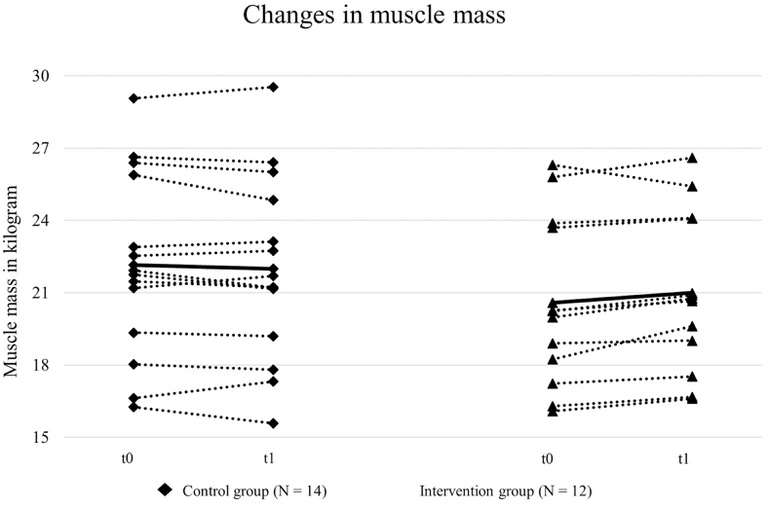
Resistance exercise snacks improve muscle mass in female university employees: a prospective, controlled, intervention pilot-study
4 März 2024
Background: Although resistance training (RT) is essential to preserve musculoskeletal fitness and maintain a healthy, independent life into old age, few women perform RT. We investigated whether resistance exercise snacking (RES) could be an efficient training approach for the workplace health promotion (WHP) to minimize barriers for participation and facilitate RT in women in order to improve musculoskeletal fitness.
Methods: This pilot-study followed a prospective, controlled intervention design. Female employees with sedentary occupations doing RT on less than 2 days/week before study participation were included. Participants self-selected for either intervention (IG) or control group (CG). While the IG [N = 15, mean age 42.1 (SD = 11.1) years] did 10 min of RES on working days for 12 weeks, the CG [N = 15, mean age 49.9 (SD = 9.7) years] was instructed to maintain their habitual physical activity. Primary endpoint was change in muscle mass. Secondary endpoint was change in maximum isometric strength. Balance, cardiovascular fitness, perceived health, and general life satisfaction was assessed for exploratory purpose. Measurements were taken before and after the intervention.
Results: 12 participants of IG and 14 of CG completed the study. Muscle mass improved significantly more in the IG [+0.42 (SD = 0.54) kg] compared to the CG [−0.16 (SD = 0.51) kg] (p = 0.01, ⴄ²p = 0.24). Strength did not change significantly between groups. Nevertheless, there was a trend for greater improvements in the IG compared to the CG for trunk extension, trunk flexion, and upper body push but not upper body pull. Regarding exploratory endpoints, no significant between-group changes were found. Despite their poor fitness, both groups perceived their health as good and had high life satisfaction before and after the intervention.
Conclusion: RES could be an effective approach for the WHP to promote RT in inactive women with sedentary occupations and improve their muscle mass.





